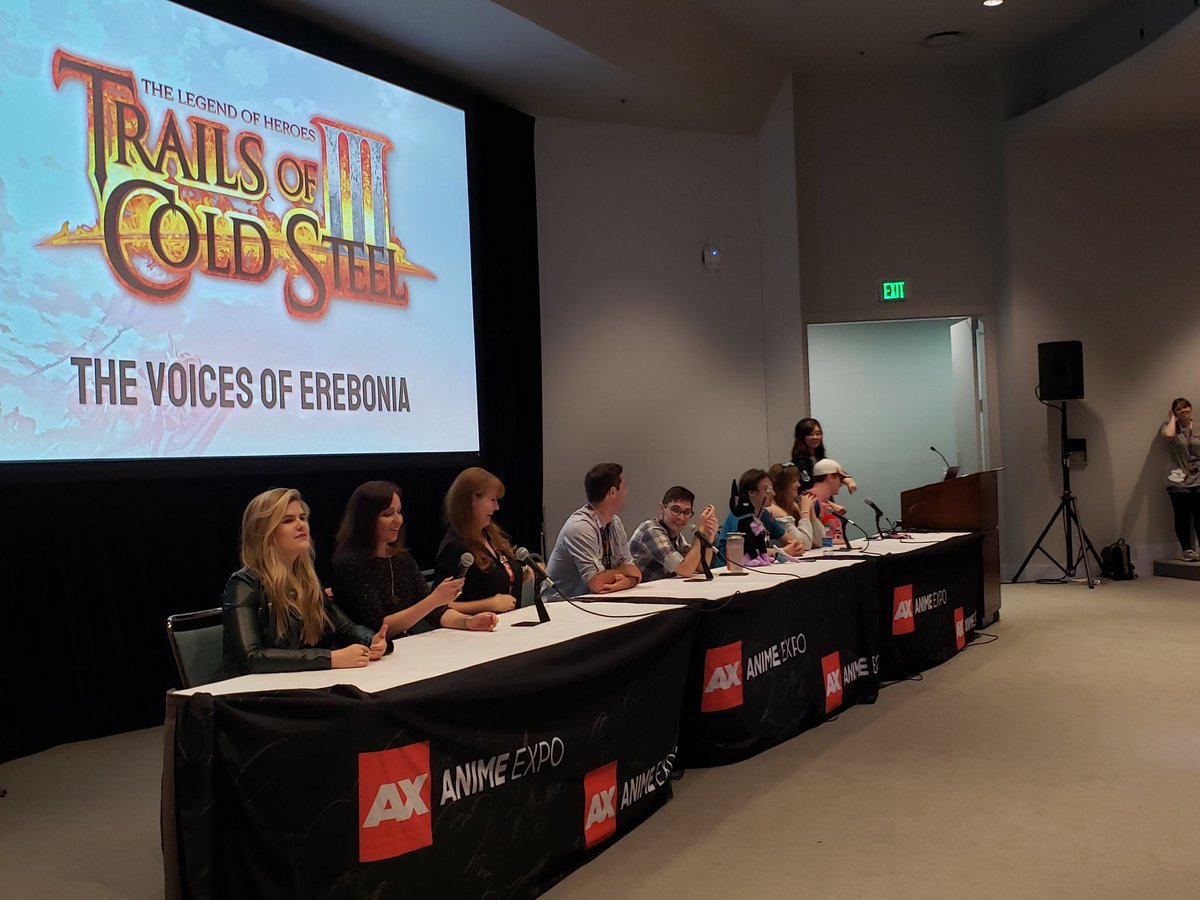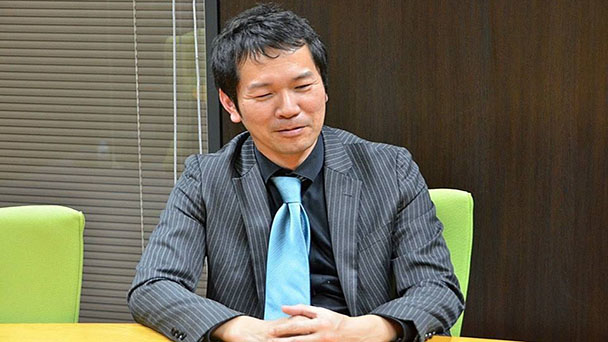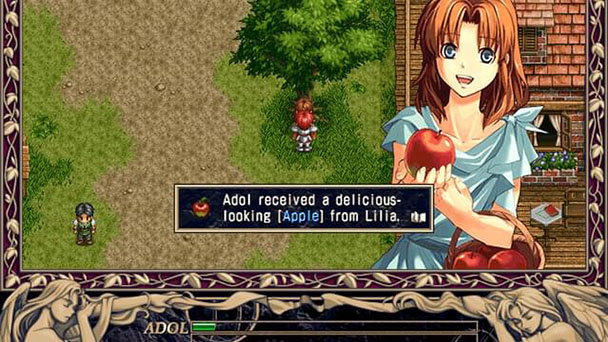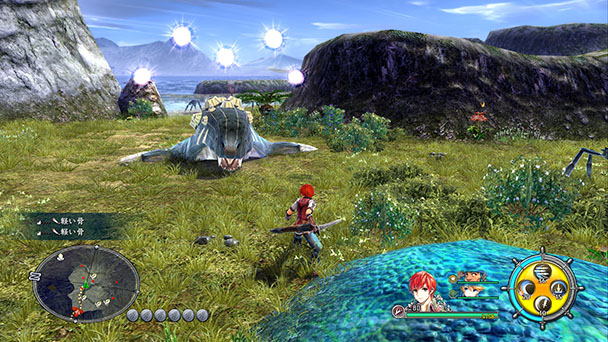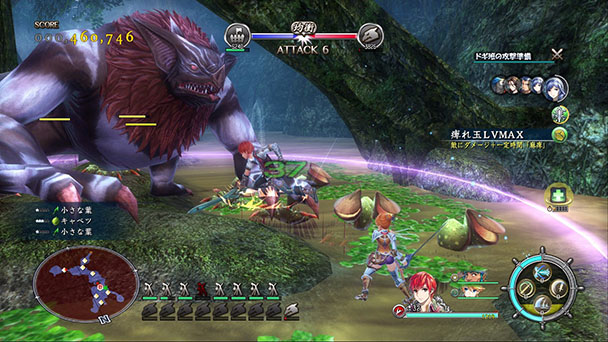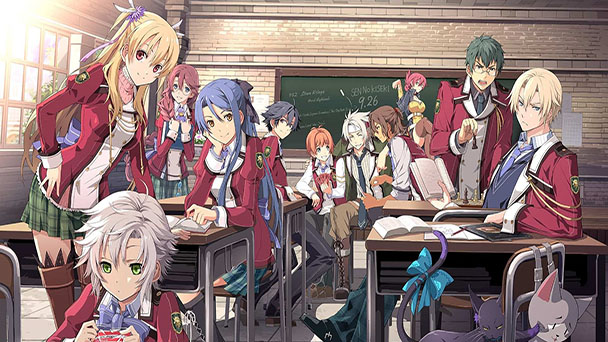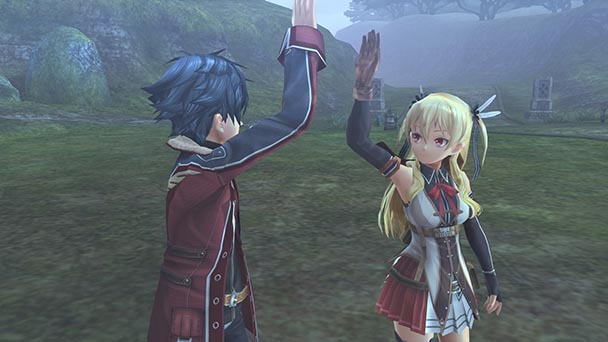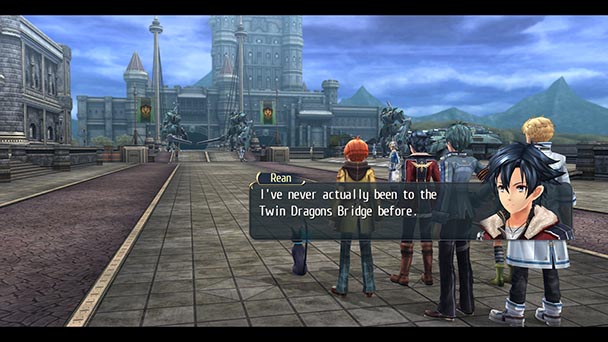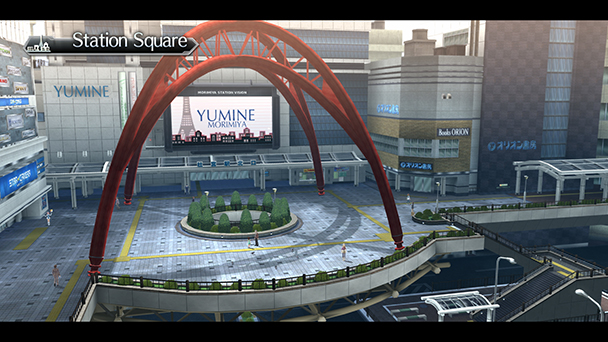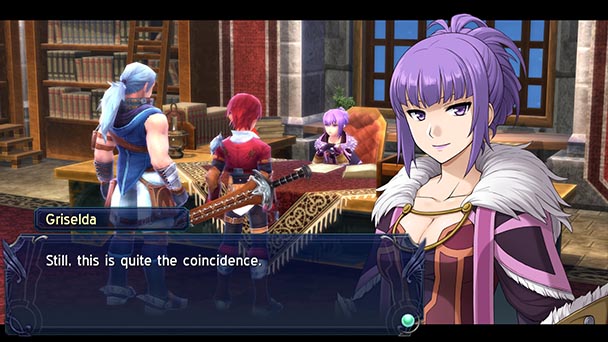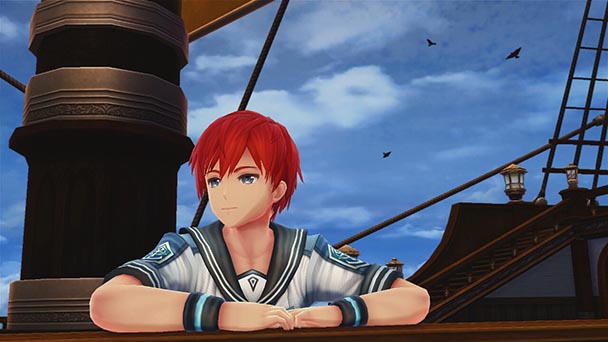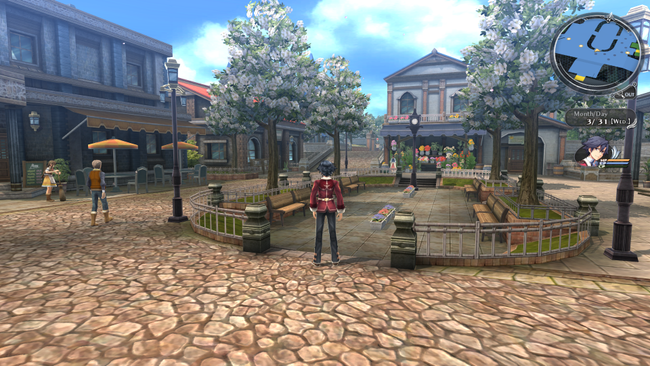Just read another Kondo San Interview, from tech-gaming:
For nearly forty years,
Nihon Falcom has crafted a steady succession of enjoyable, consistently charming and wonderfully melodious role-playing and action role-playing games. In anticipation of the release of
The Legend of Heroes: Trails of Cold Steel III, we had the opportunity to speak with Falcom’s president, Mr. Toshihiro Kondo on their formula for enduring success, the tension between creativity and commerce, and of course, the rich legacy cultivated by the company’s titles. What follows is part one of a two-part interview conducted before Anime Expo:
Tech-Gaming: Recently Nihon Falcom celebrated their 38th anniversary, which is quite a feat of longevity. What do you feel are some of the design philosophies that have contributed to the company’s endurance?
Toshihiro Kondo: From a design standpoint, we make would be considered as traditional games. But the truth is, we also put a lot of time, care, and effort to ensure the quality of these games, and that generally gets recognized by the players. You were kind enough to say that we have a lot of passionate fans over here in the West and in the same way we have these passionate fans in Japan. And we’ve heard of people who might have stopped playing video games, it’s not uncommon for them to want to pick up and play Falcon games as they come out. So again, that that care that goes into each and every game that we make is one of the secrets of our success and longevity.
T-G: Not long ago, I met with a team from HAL Laboratories, a developer that’s roughly the same age as Falcom. I was a bit surprised by the dedication to research, the time spent studying older titles and thinking about how to modernize some of their game mechanics. Can you talk about your company’s approach to honoring older properties?
TK: What you said right now about HAL laboratories really resonates with me. For our studio, just about everybody who joins, particularly on the development side, are really big fans of past properties, especially,
Ys and the
Trails series. These games mean a lot to us. And when we have meetings it’s not uncommon for the conversation to shift to what happened in the past, thinking about what we did in this game and what happened in that game. We’ll discuss things like where a treasure chest is placed, how the animations or the story parts play out, or even how information is given to the player. We consider our older games our textbook and our Bible, and that’s how we develop the games currently in the series.
T-G: Let’s talk about the Falcom’s output, which includes continuations of popular franchises like the
Tales series, the occasional remake like
Brandish: The Dark Revenant, and original titles like
Tokyo Xanadu. Can you take us behind the scenes and discuss how the team determines their next project?
TK: One of these things you must remember about older games is that, while they might be lacking in things like graphics, they were very rich in ideas. Falcom, is not a large-scale company; we don’t have a ton of people. We don’t have the ability to be able to put so much energy into graphics and things like that. So, for us ideas are still very important, especially interesting ones. In game design, the idea part is often lacking, and developers can get a bit lazy when it comes to that area. I’d like to think that Falcon doesn’t skip out on this, we don’t try to hide weaknesses with graphics or things like that. We really want to get to get to the heart of what makes games enjoyable.
For titles that are continuations of series, those are kind of a given, if they’re well received. We basically just look at what was done in the past and then iterate and build off that for newer titles. You mentioned
Tokyo Xanadu, which is a good example of how we looked at our past; games we’ve worked on before. We try to use that accumulated knowledge and put it to use for it for new things like capturing Tokyo’s energy. The
Trails series is very narratively-focused, and we took what we what we learned from writing stories on the
Trails series and put it in there. On the gameplay side, the action element is obviously from the
Ys games.
The next challenge is figuring out what new things we’re going to do here; what are we going to try? So, someone said, we’ve never made a game set in a modern setting. That idea is fine and well, but what’s going to make it a Falcom game? What’s going to differentiate it from other modern games. You have things like
Persona out there. So, we ask, “What can we bring to the table?” The planner had an idea, stating, “we have this
Xanadu series”, which is this classic action RPG that we’ve made. Then you have Tokyo, and we’ve never really done anything with Tokyo. In this instance, the title of the game came first. That was the core concept, and the rest of the ideas fell into place.
Another example, this is a little bit older, the team has a graphical tool program and our artist was kind of playing around one day. He had a house on a fairly blank field and then put some basic lighting effects and added a character, and had that character walk behind (the house). Then one of the programmers asked, “Well, what can we do with this?” And just from those two people playing around that became
Zwei. At that point the game was worked on by a fairly new employee, Makoto Shinkai, who because famous for (anime films such as)
5 Centimeters Per Second and
Your Name. So that’s another way we have come with game ideas.
T-G: Profitability and creative expression are often viewed as oppositional tensions in art. How much does this factor into the company’s decision when tacking a new title?
TK: To begin with, a lot of the staff doesn’t necessarily think of the games as ‘products’. Falcon is an accumulation of people who want to make videogames. If you create games that don’t sell, or they don’t go to market, or they don’t even have a market, then of course you can’t keep doing that. There’s this understanding that you need to bring players something of value that they’re going to enjoy so much that they’re going to pay money, permitting the cycle to continue, and we can keep making games. Keeping this balance has allowed us to create games that have been liked over the years.
T-G: Perhaps, you can give us a figurative look inside the office. How big is the size of the company? How many different teams (or lines) are there? What’s in like to work there?
TK: The answer to the first question is 62 employees, with 50 of the staff working directly on development. As you can see, most of the company had a hand in development. As for lines, you could say there are three or four development lines, but one of the characteristics of our development is that we begin with very small core teams. We’re talking three to four members maybe. From there as the project ramps up and more details get decided the team will increase in size towards the finish line.
Another way to think about it is that you have for each project you have these core members that are there from start to finish and then you have people who will come in later on as things get more developed and fleshed out. As for office atmosphere, one thing that we’re often told is that our office is very clean and well taking care of and it’s also very quiet.
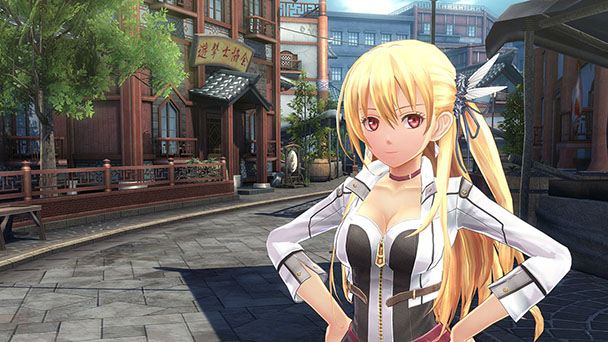
It’s so quiet that we’ve actually been told by new members to the company that they’re almost afraid to get up to use the rest because they don’t want to disturb the peace. Obviously, when there are meetings and things like that it gets a bit more lively. But when people from outside who come in they’re really impressed that it’s so quiet. So, we probably don’t even recognize it at this point, because that’s the environment we’re used to, but for employees of companies it’s quite a surprise. Another thing that is really surprising for people who I come to visit is that everybody wears suits including development stuff. Nobody wears (less formal) “outside clothing” as it were. At this point in game development, we’re probably the last company in Japan to do this, so sometimes we might look strange or mysterious (laughs).
Tech-Gaming: When a game is released, critics and consumers typically have a lot of say. How much of that is heeded and used for Falcom’s future designs, especially with sequels?
TK: We generally look at feedback for things that we ourselves may have noticed. Let me give you two examples, which are both from the
Trails series. One is that things like movement had a tendency to be a little bit slow, so we implemented a “high speed mode” which is something that’s exactly like it sounds, you press a button, and everything moves much quicker, speeding up the pace of things.
The second was that combat was also kind of criticized for not being active enough. So, we took that into consideration as well, which you’ll see soon with
Cold Steel 3. Battle is much more dynamic and speeder. On the other hand, we also receive feedback like, “Well, I don’t really care for this character”. We look at those things too, but honestly speaking, that ends up being a matter of personal preference to the player and we can’t really make a game dictated on what some people may or may not like. With things like that, we look at it, we consider it, but at the end of the day, especially when it comes to story or character, we going to make the kind games that we want to make.
T-G: Currently, many role-playing games sell just as well in the West as they do in Japan. Has this had any influence on your output?
TK: Well, we are Japanese developers and we develop from a Japanese perspective and a Japanese point of view. Honestly, sometimes we don’t quite understand the feedback we receive from Western fans. Let me give you an example from the
Trails series. We often get requests to turn the series into an open-world style game. That’s something we can’t wrap our minds around because these games are so story focused. Events need to be seen in a certain order to get that emotional payoff that we want people to have. You wouldn’t be able to do this with those kind of things with an open-world style. With things like that we really just shrug our shoulders because we don’t know how to handle it.
On the other hand, when we received feedback on combat being slow, that was quite helpful. When feedback is related to the system it’s much easier to understand and ultimately to address. And that’s what we have actually done.
Another thing is character ages. This is actually something that we hear from quite a lot. Generally speaking, the ages of Japanese characters tend to skew a bit younger whereas people in the West kind of prefer older characters. It could be because I am getting older, but that’s something I am beginning to understand more. And since our games are well received in Japan, why don’t we consider making characters that are a bit older now? It’s exactly like you said, sales figures are increasing in the West. And honestly not just in the West but also across Asia. Our fanbase is growing to the point that you can’t ignore those voices. And who’s to say what will happen in 5 or 10 years from now, particularly with the way the Japanese market is trending. Maybe in 5 or 10 years, we’ll be making games predominantly for the West rather than now, where they’re made predominantly for Japan.
T-G: Often it takes months and sometimes years to localize a game for different territories? Has Falcom taken any steps to help reduce this interval?
TK: These are things that we are considering as we go forward in game development. To give you a little bit of background to why this is, well most of our games have an absolutely huge amount of text. I also think that in general, we develop games on a pretty quick turnaround time. The amount of time we actually have for development is on the shorter side, and therefore it’s not uncommon for us to be changing numerous things, as we get into the later stages of development. For those reasons we actually have a policy of not talking about localization or project partners, until the game is completed. Things are in such flux during development, so we don’t want to offer something that might end up changing later on.
In the past for
Cold Steel I and
II, we actually had a simultaneous release with Asia. But the truth is that the ones who localized it were Sony, actually. We had a ton of changes right up until the very end. It put a lot of pressure and stress on their localization teams, at least the people they were using for localization. If anybody knows anybody who can handle that, and wants to do publishing, we’d love to meet them. But by and large, we don’t like to put people through that. (laughs). After that, Sony never approached us for a simultaneous release. So that was something we need to work on.
To give you another example, with
Tokyo Xanadu, the development time was only about a year. Within that, the first two and a half months or so was devoted to creating the scenario. But sure enough, as we developed the game, as we implemented different systems, we had to change a lot in regard to the [game’s] scenario. And that’s just not really tenable when working with a partner. So again, it is something that we need to address in the future but that’s the reality of how we develop games right now.
T-G: Let’s talk about role-playing games, a genre that that the team understands quite well. Naturally, they’re a synthesis of different elements, combining things like story, characterization, and battle mechanics. But if you had to choose the most important component what would it be?
TK: You know the thing about RPGs, even within these sub-genre of RPGs you can compartmentalize that even further into different types of role-playing games. I’d have to say that every game needs something different. So, I can’t point to one specific element that’s going to apply in every case when making a game. For example, I can tell you within our two flagship series, looking at the
Trails series, it’s obviously the story. We believe that the players are there for the characters and the story. As such, we focus on those most of all to make a really good story with great characters. And actually, that story does come first and then informs different elements of the gameplay, in terms of combat, and the setting, and things like that.
Now on the other hand you take a series like
Ys and it’s actually the exact opposite. The most important things for
Ys is the responsiveness of combat; how combat feels, movement, and things like that. Therefore, we take that opposite approach. We think about the systems that we want to incorporate in a new Ys title, particularly, asking what kinds of things Adol will be doing from a gameplay perspective. And that informs what we’ll be doing for the setting and the location in the story.
But if I had to choose a single element, I’d say it’s more from a game design perspective. You know we are making players do lots of things, and often, overcome difficulties in that pursuit. Whether there’s a story payoff for some kind of gameplay path or something else, the thing is you need to give players a goal. Internally we call them, “treats”. For example, let’s say you have a large city in a
Trails game. You’ve got a big map and you’ve got say, a distant back alley that’s part of the map. You have to give the player some kind of reward or a payoff for going back there, whether that be a treasure box or maybe some NPC standing there with an interesting story to tell. What we always tell our game designers is that you need to give the player a sense of reward. So, creating the game, thinking about how the player might respond in a given situation or where they might go on a map and having a payoff for every part of that is a very important element of game design. That doesn’t matter whether it’s the
Trails or whether that’s
Ys, it’s something for all our games.
T-G: While the game industry and its output are gradually maturing, it often seems that games might not have the respect given to other mediums, like literature or film. Yet, the quality and quantity of dialogue across the
Kiseki series is excellent, rivaling the best works in other mediums in both quantity and quality. How can games garner more respect?
T-K: What I’d like to think is that when someone comes to the end of their life and they’re looking back on things, being able to say we made a really great game is what the goal would be. Every creator is going to have a different approach for how to reach that goal, but the truth of the matter is that so many games come out. When you look at something like smartphone games, I mean I doubt that anyone at the end of their life is going to say, “that was a great smartphone game”.
In order to get that respect, perhaps creators need to make something that will stand the test of time. That someone, at the end of their days, when they’re looking back at the cool things that they experienced, might be able to say, “that was gratifying”. Of course, it kind of depends on the game and everyone might think separately. And again, for say, the
Trails series, it might be a story that resonated within you. For the
Ys series, it might be the recollection of “that game was great. I remember how I felt when I played it”.
